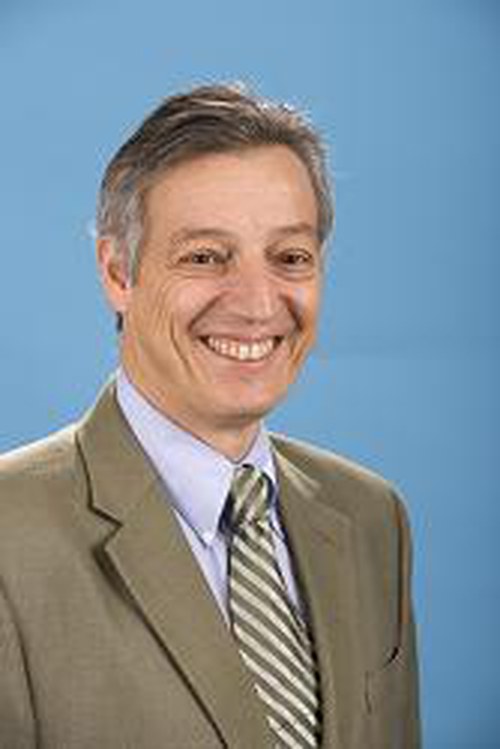Contatto di riferimento: Prof. Cecilia Metra
Recapito telefonico per contatti: +39 051 2093013
Seminar schedule
- Thursday, April 27, 9-11, Room 1.3
- Friday, April 28, 9-11, Room 5.7
About the speaker
Jean-Luc Gaudiot received the Diplôme d'Ingénieur from the École Supérieure d'Ingénieurs en Electronique et Electrotechnique, Paris, France in 1976 and the M.S. and Ph.D. degrees in Computer Science from the University of California, Los Angeles in 1977 and 1982, respectively. He is currently a Professor in the Electrical Engineering and Computer Science Department at the University of California, Irvine. He was Chair of the Department from 2003 to 2009. During his tenure, the department underwent significant changes. These include the hiring of twelve new faculty members (three senior professors) and the remarkable rise in the US News and World Report® rankings of the Computer Engineering program from 42 to 28 (46 to 36 for the Electrical Engineering program).
Prior to joining UCI in January 2002, he was a Professor of Electrical Engineering at the University of Southern California since 1982, where he served as Director of the Computer Engineering Division for three years. He has also designed distributed microprocessor systems at Teledyne Controls, Santa Monica, California (1979-1980) and performed research in innovative architectures at the TRW Technology Research Center, El Segundo, California (1980-1982). He frequently acts as consultant to companies that design high-performance computer architectures, and has served as an expert witness in patent infringement and product liability cases. His research interests include multithreaded architectures, fault-tolerant multiprocessors, and implementation of reconfigurable architectures. He has published over 200 journal and conference papers. His research has been sponsored by NSF, DoE, and DARPA, as well as a number of industrial organizations.
From 2006 to 2009, he was the first Editor-in-Chief of the IEEE Computer Architecture Letters, a new publication of the IEEE Computer Society, which he helped found to the end of facilitating short, fast turnaround of fundamental ideas in the Computer Architecture domain. From 1999 to 2002, he was the Editor-in-Chief of the IEEE Transactions on Computers. In June 2001, he was elected chair of the IEEE Technical Committee on Computer Architecture, and re-elected in June 2003 for a second two-year term. In 2009, he was elected to the Board of Governors of the IEEE Computer Society for a 3-year-term. He was the Chair of the IEEE Computer Society Publications Board Transactions Operations Committee (2010-2011), the Chair of the IEEE Computer Society Publications Board Magazines Operations Committee in 2012, the IEEE Computer Society vice President, Educational Activities Board in 2013, and is now the IEEE Computer Society vice President, Publications Board. Dr. Gaudiot is a member of AAAS, ACM, and IEEE.
He has also chaired the IFIP Working Group 10.3 (Concurrent Systems). He was co-General Chairman of the 1992 International Symposium on Computer Architecture, Program Committee Chairman of the 1993 IFIP Working Conference on Architectures and Compilation Techniques for Fine and Medium Grain Parallelism, the 1993 IEEE Symposium on Parallel and Distributed Processing (Systems Track), the 1995 Parallel Architectures and Compilation Techniques Conference (PACT ‘95), the High Performance Computer Architecture conference in 1999 (HPCA-5), and the 2005 International Parallel and Distributed Processing Symposium. In 1999, he became a Fellow of the IEEE, “For Contributions to the Programmability and Reliability of Dataflow Architectures.” He was elevated to the rank of AAAS Fellow in 2007, “For Distinguished Contributions to the Design and Analysis of Highly Efficient Multiprocessor and Memory System Architectures.”
Abstract
Computer systems have undergone a fundamental transformation recently, from single-core processors to devices with increasingly higher core counts within a single chip. The semi-conductor industry now faces the infamous power and utilization walls. To meet these challenges, heterogeneity in design, both at the architecture and technology levels, will be the prevailing approach for energy efficient computing as specialized cores, accelerators, etc., can eliminate the energy overheads of general-purpose homogeneous cores. However, with future technological challenges pointing in the direction of on-chip heterogeneity, and because of the traditional difficulty of parallel programming, it becomes imperative to produce new system software stacks that can take advantage of the heterogeneous hardware.
As a case in point, the core count per chip continues to increase dramatically while the available on-chip memory per core is only getting marginally bigger. Thus, data locality, already a must-have in high-performance computing, will become even more critical as memory technology progresses. In turn, this makes it crucial that new execution models be developed to better exploit the trends of future heterogeneous computing in many-core chips. To solve these issues, we propose a cross-cutting cross-layer approach to address the challenges posed by future heterogeneous many-core chips. We will show how performance issues must be considered side-by-side with power and energy considerations and demonstrate how energy can become a dominant factor in the design of FPGA-based systems.
